Our Verdict
It's a Formula 1 car of mice, and that means blistering speed and performance. It also means it's very expensive, uncomfortable if you're the wrong size, and a pain to use for normal tasks.
For
- Superb tracking performance
- Exceptionally light
- Faultless wireless connection
- Solid button and wheel action
Against
- Not great outside of gaming
- 8 kHz polling rate eats battery charge
- Very expensive
- Bland design
PC Gamer's got your back
"For the pro," says Razer's marketing line. "The GOAT of wireless esports mice returns to reshape the competitive scene." If you know what any of that means, you'll know exactly what you're getting here. A mouse that's extremely light and has a very high sensitivity and polling rate. The thing is, that's not exactly rare amongst extreme gaming mice, so what exactly is Razer offering that's different in its new Viper V3 Pro?
Perhaps more important are the changes that Razer has implemented over its predecessor, the Viper V2 Pro, as that offered all the above features. Well, the main shell and buttons have been slightly redesigned, the optical sensor has been updated, and a few grams of weight have been shaved off.
Starting with the design, where the V2 Pro had raised sections just behind the left and right buttons, the V3 Pro has been completely smoothed out and in general, the overall design is now very conservative. The buttons are still Razer-styled but other than that, the Viper V3 Pro doesn't exactly look like it's a cutting-edge mouse. Given the fact that it's $158/£155/AU$279, it's not immediately obvious as to where Razer has spent its money on updating the design.
I can't say I'm a fan of the material used for the shell, either—the plastic attracts fingerprints like a grease magnet and the mouse needed to be furiously cleaned, repeatedly, before any pictures could be taken. It also feels a bit on the cheap side, although that's mostly down to Razer's decision to make the Viper V3 Pro as light as possible.
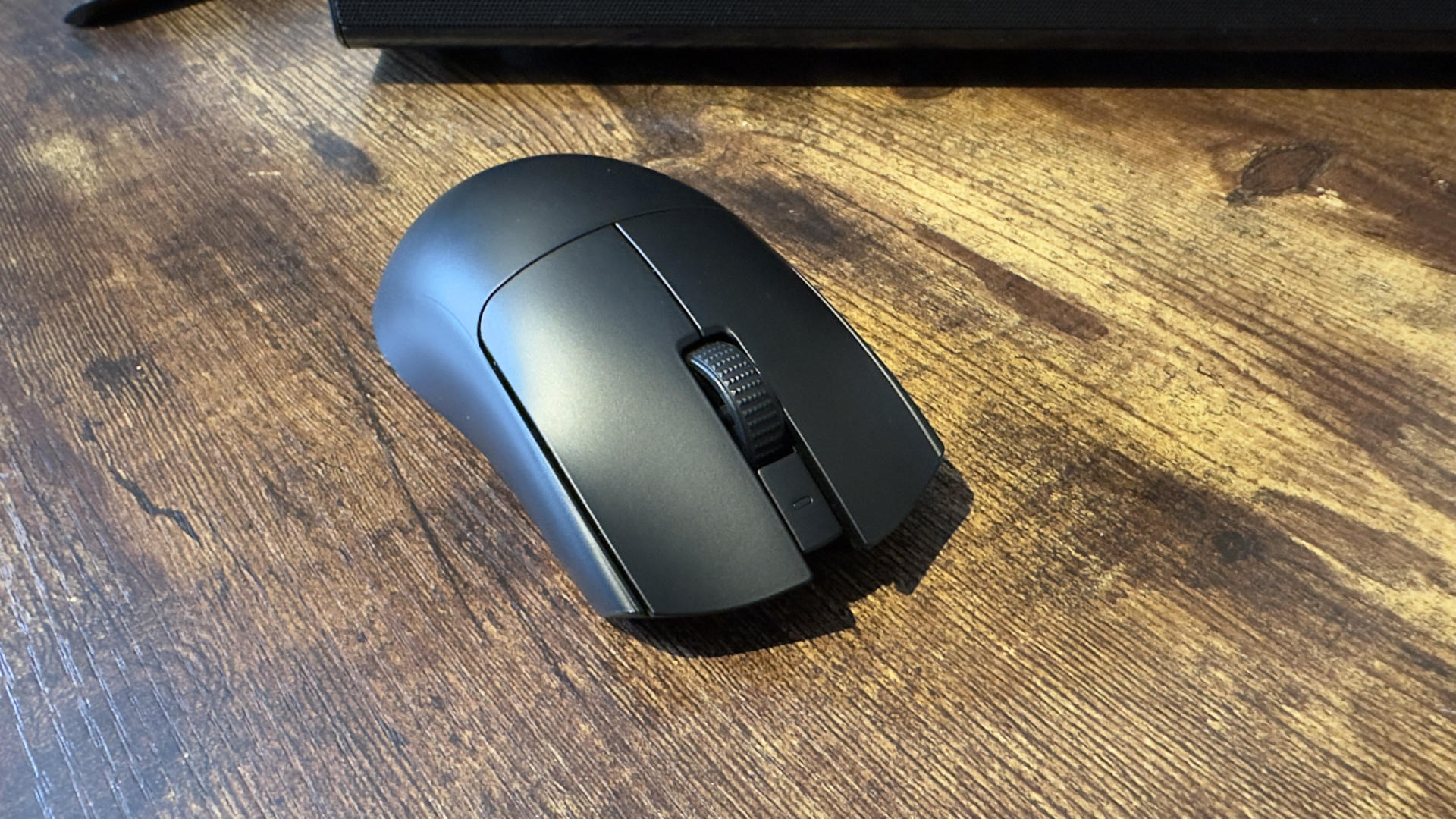
Buttons: 6
Feet: PTFE
Connectivity: wired (USB-C), wireless (USB-C dongle)
Sensor: Focus Pro 35K Optical Sensor Gen-2
Max DPI: 35,000
Max acceleration: 70 g
Max speed: 750 IPS
Polling rate: up to 8,000 Hz wireless | 1,000 Hz wired
Battery life: 95 Hrs (1,000 Hz) to 17 Hrs (8,000 Hz)
RGB lighting: none
Warranty: 2 years
Price: $158 | £155 | AU$279
At 54 g (55 g for the white version), it's 4 g lighter than the V2 Pro, though that mouse could hardly be classed as being heavy. It feels exceptionally featherweight, so much so that I'm convinced a strong fan could blow it across a mouse pad. Okay, I'm exaggerating somewhat, but if you need a mouse with minimal mass, the Viper V3 Pro is certainly one to consider.
While the whole thing has a very airy (read: thin and hollow) feel to it, at least the buttons and wheels are properly solid. Optical switches underneath the main buttons help with speedy clicks but they'd be for nothing if the action was terrible. It's absolutely not and everything has a reassuring positiveness to it, especially the wheel.
You can really feel the notches as you spin it around, and if you prefer to flick the mouse wheel to change weapons in the middle of a heated battle, you'll be thankful for Razer's design. Outside of gaming, though, it's not so hot—scrolling through webpages or long documents is pretty tedious, and the Synapse software has no option to customise this action.
What you can alter in Razer's software is the sensitivity and polling rate. The former can be cycled through five stages via a small button in the mouse's base, and you can configure what DPI each press jumps to in Synapse. I do wish there was a second button, though, to make it much easier to cycle back and forth through the sensitivity options.

That sole button also acts as the power switch, with a long press being required to power it on and off.
The maximum DPI supported by the Viper V3 Pro is 35,000 dots per inch, which is 5,000 more than the V2 Pro, thanks to the second-generation Focus Pro optical sensor. Mere mortals such as myself would never notice the difference, though it is quite fun trying to play a round of Counter-Strike 2 at max sensitivity.
A simple twitch of a single muscle fibre will have your crosshair flying about; blink a little too firmly and you'll be server kicked for friendly fire. Such extreme sensitivity is obviously only there for those that really need it and I was more than happy with 3,200 DPI.
Something else that's only for the select few is the 8,000 Hz polling rate. Peripherals such as mice and keyboards can't interrupt the CPU to issue a new command; instead, the operating system checks for inputs at a set rate. For most wireless mice, this rate is 1,000 Hz.
Razer's Hyperpolling system increases this and the Viper V3 Pro now supports 2,000 and 4,000 Hz, in addition to the all-out 8 kHz setting. Just as with the sensitivity, super high polling rates aren't going to be of much use to the average PC gamer, even for those who are keen on competitive shooters.

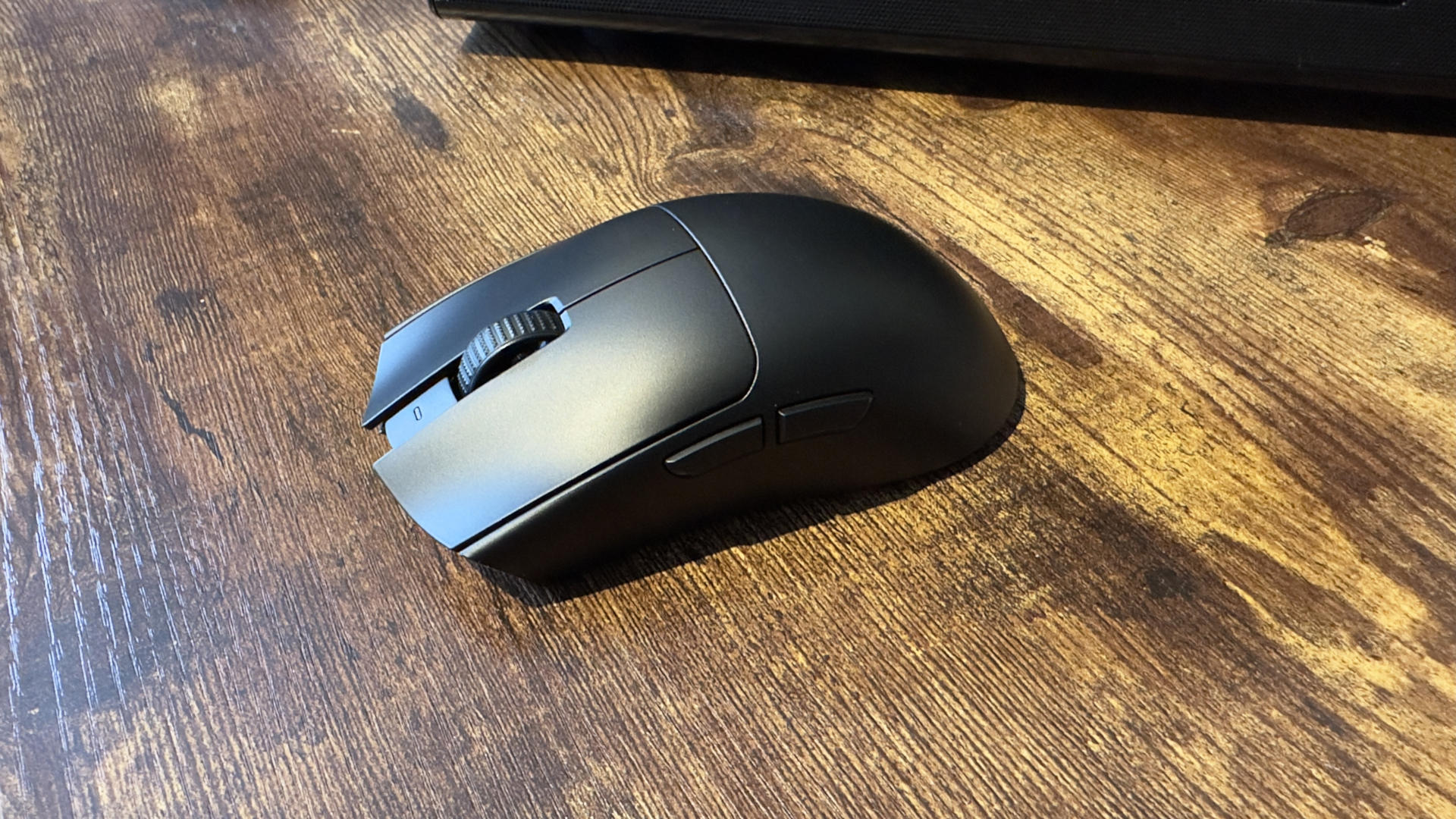
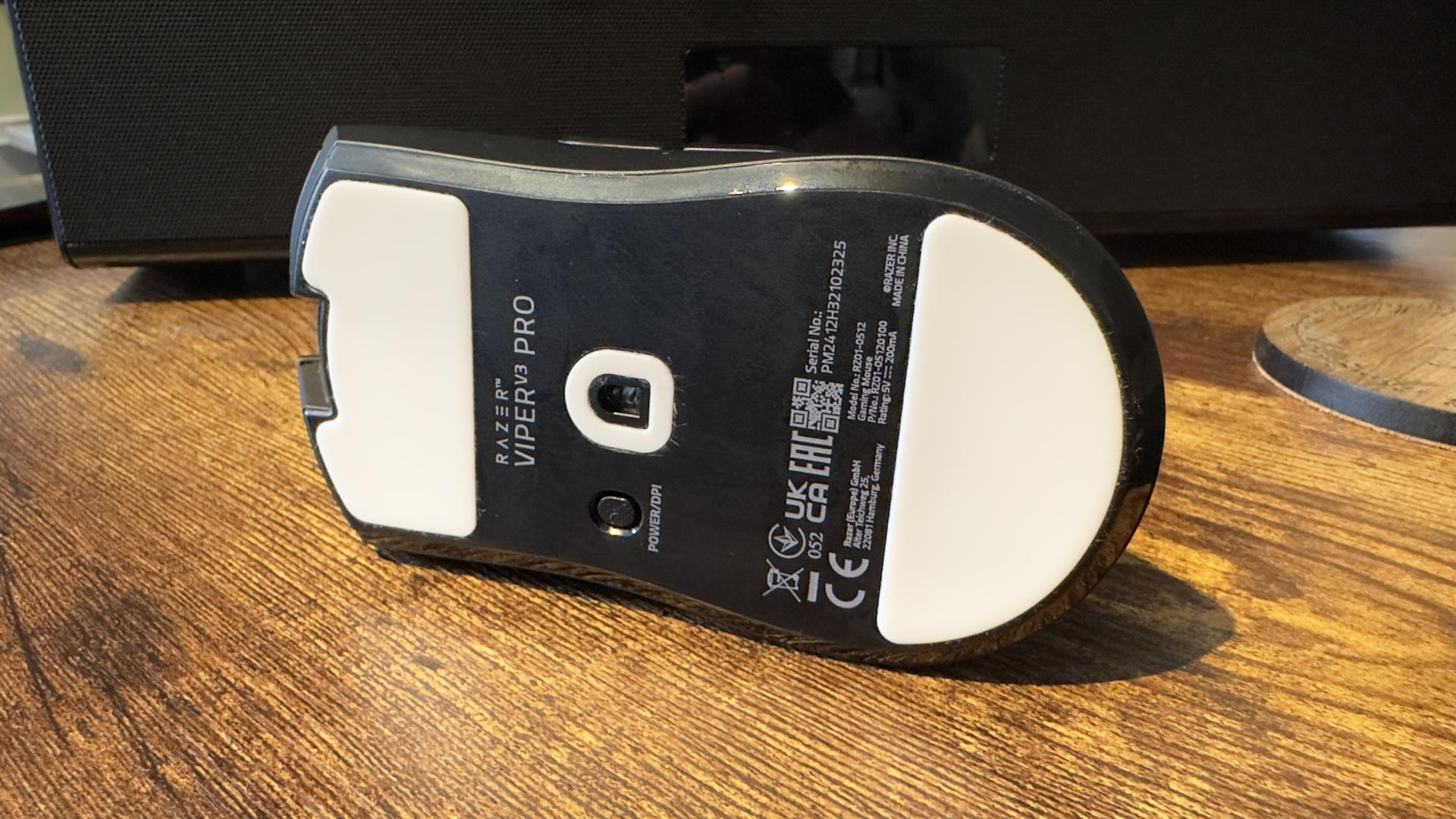
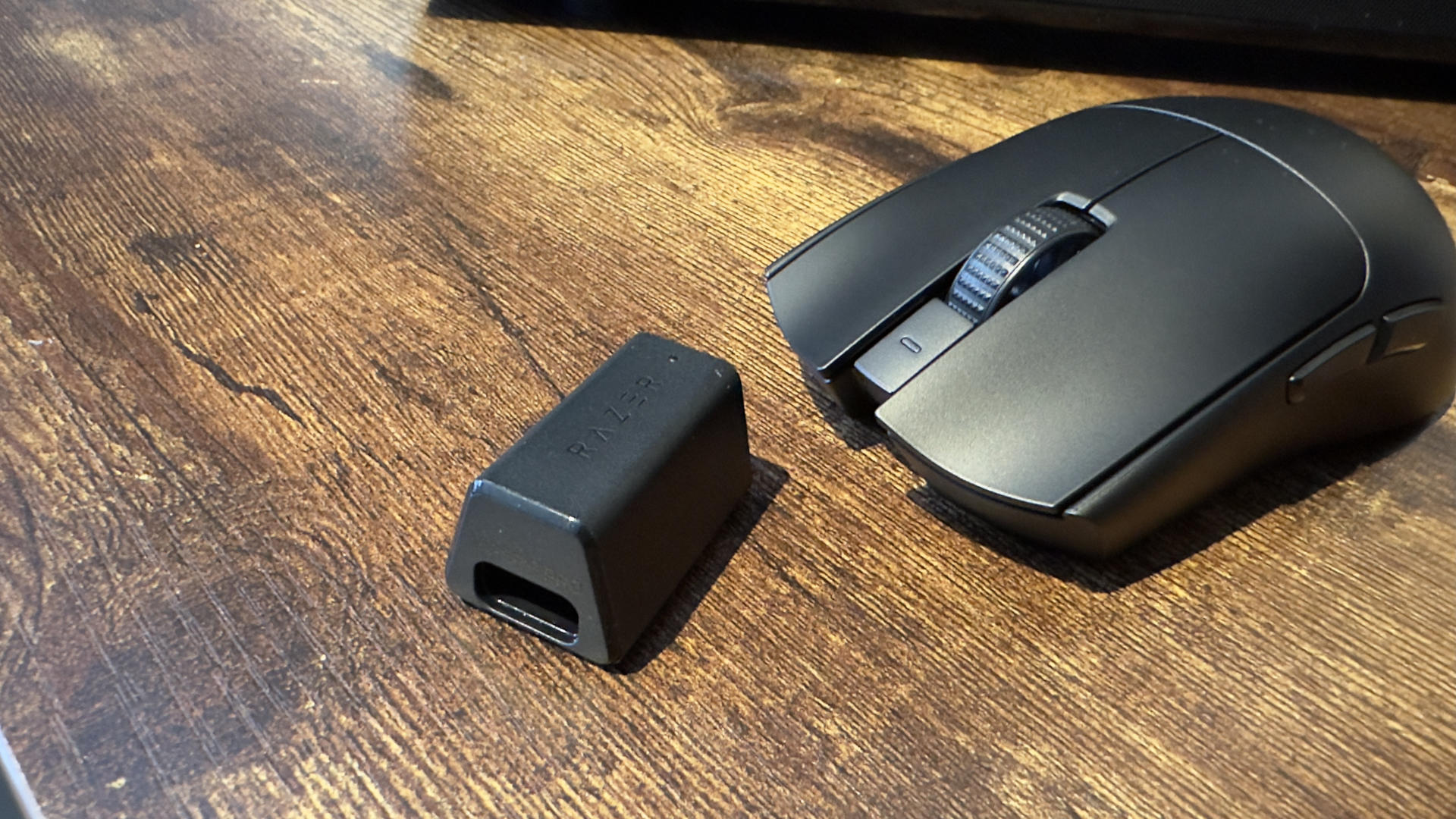
Where I could notice a difference between 1 kHz and 2 kHz in Counter-Strike 2, anything higher produced no perceptible improvement for me. What I did notice, though, was that leaving at a high polling rate seriously chomped through the battery's charge.
It's rated to 95 hours when using the standard 1,000 Hz polling rate but it drops to just 17 hours at 8,000 Hz. Those claims seem about right, as the Synapse software showed around 12% of battery charge use from 2 hours of gameplay when using 8 kHz polling.
Should that be a concern, then the Synapse software has the option to switch to a higher polling rate when gaming and use a lower, power-friendly rate when using Windows and other apps. That feature is well worth enabling, as the Viper V3 Pro's battery does charge as fast as other mice I've used and tested of late.
The 2nd-gen Focus Pro 35K Optical Sensor and 8K HyperPolling are all well and good, but they'd be for nought if the actual tracking performance of the mouse wasn't up to spec. So I ran through benchmarks via MouseTester to see how the Viper V3 Pro actually fares—what you're looking for is how spread out the dots are in the graphs below. The more tightly packed they are, the better the mouse is at reporting movement.
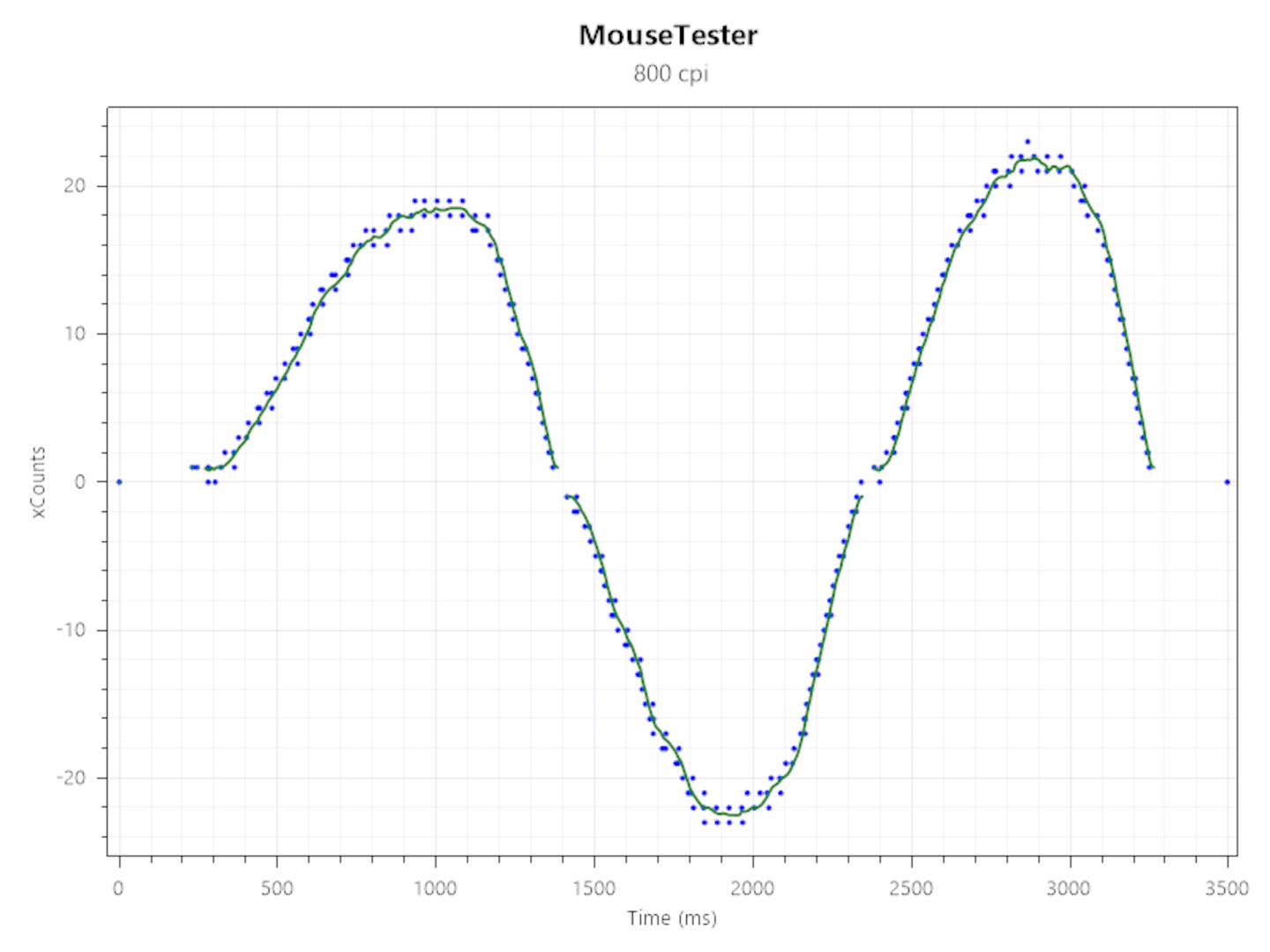
1,000 Hz — The closer the dots are together, the more consistent a mouse is reporting movement. More variation or stray dots makes for a less accurate sensor.
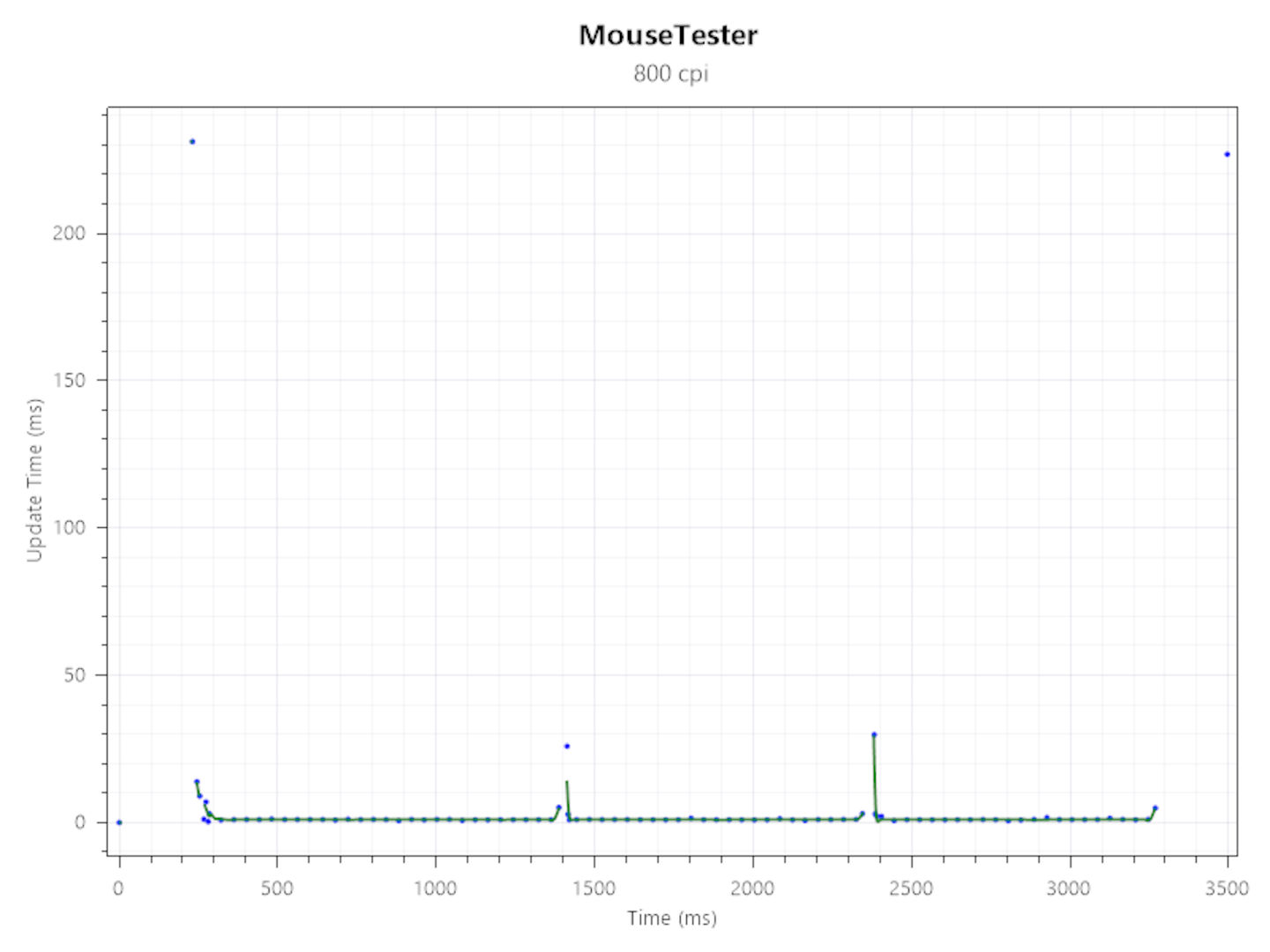
1,000 Hz — Each dot represents an update, which corresponds to the polling rate. Every 1 ms should mark a single update on a 1,000 Hz mouse.
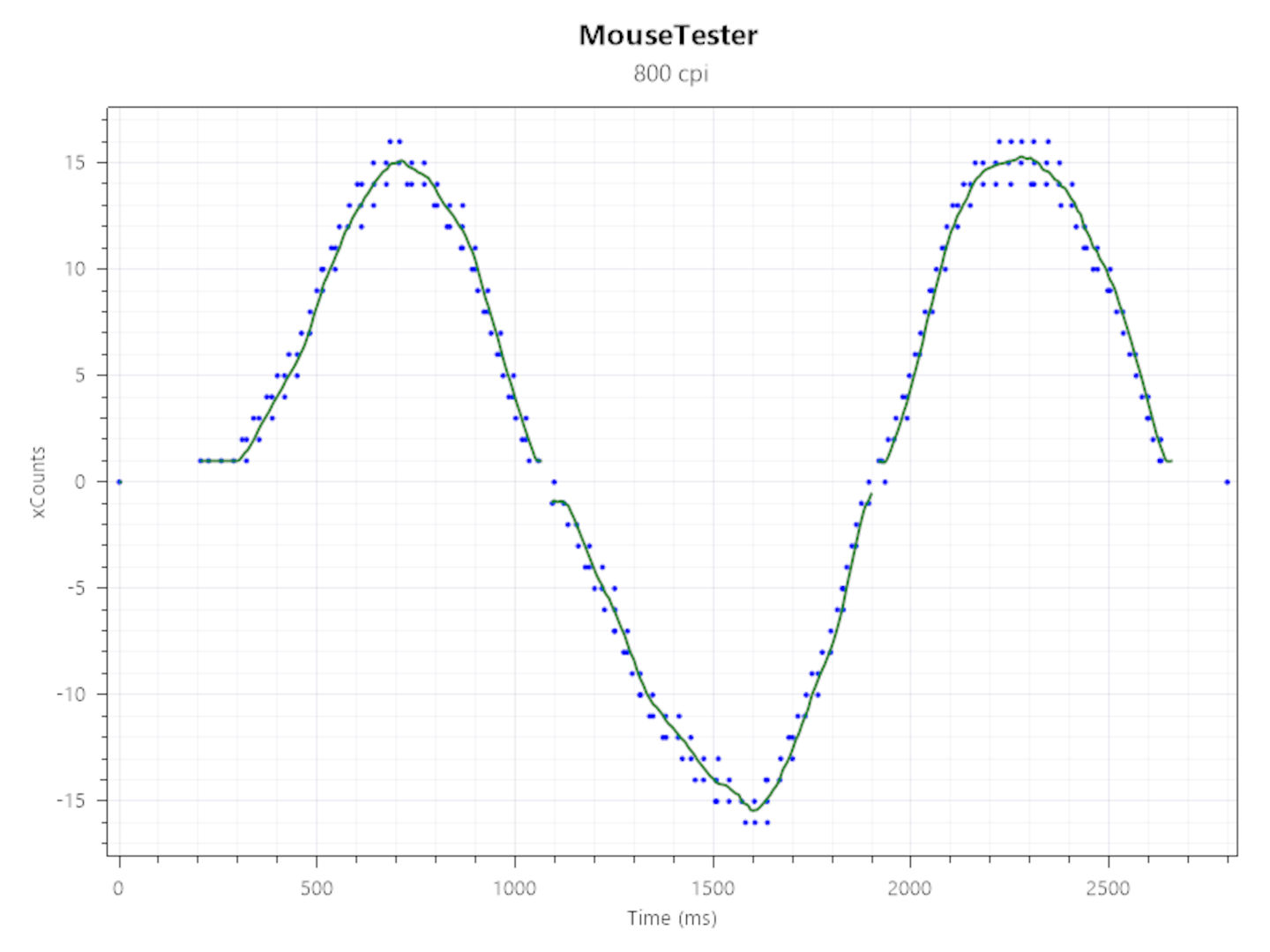
2,000 Hz — The closer the dots are together, the more consistent a mouse is reporting movement. More variation or stray dots makes for a less accurate sensor.
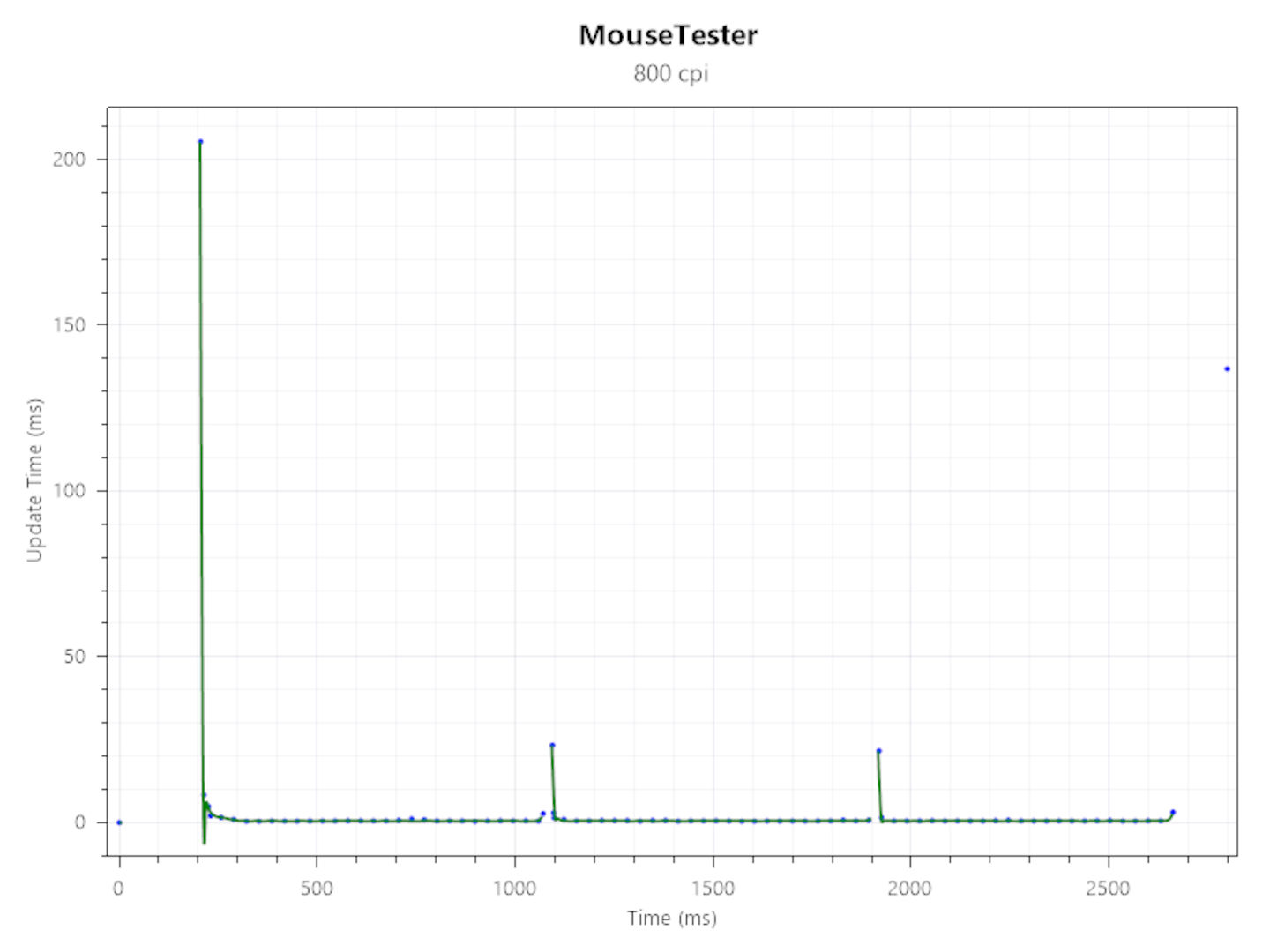
2,000 Hz — Each dot represents an update, which corresponds to the polling rate. Every 1 ms should mark a single update on a 1,000 Hz mouse.
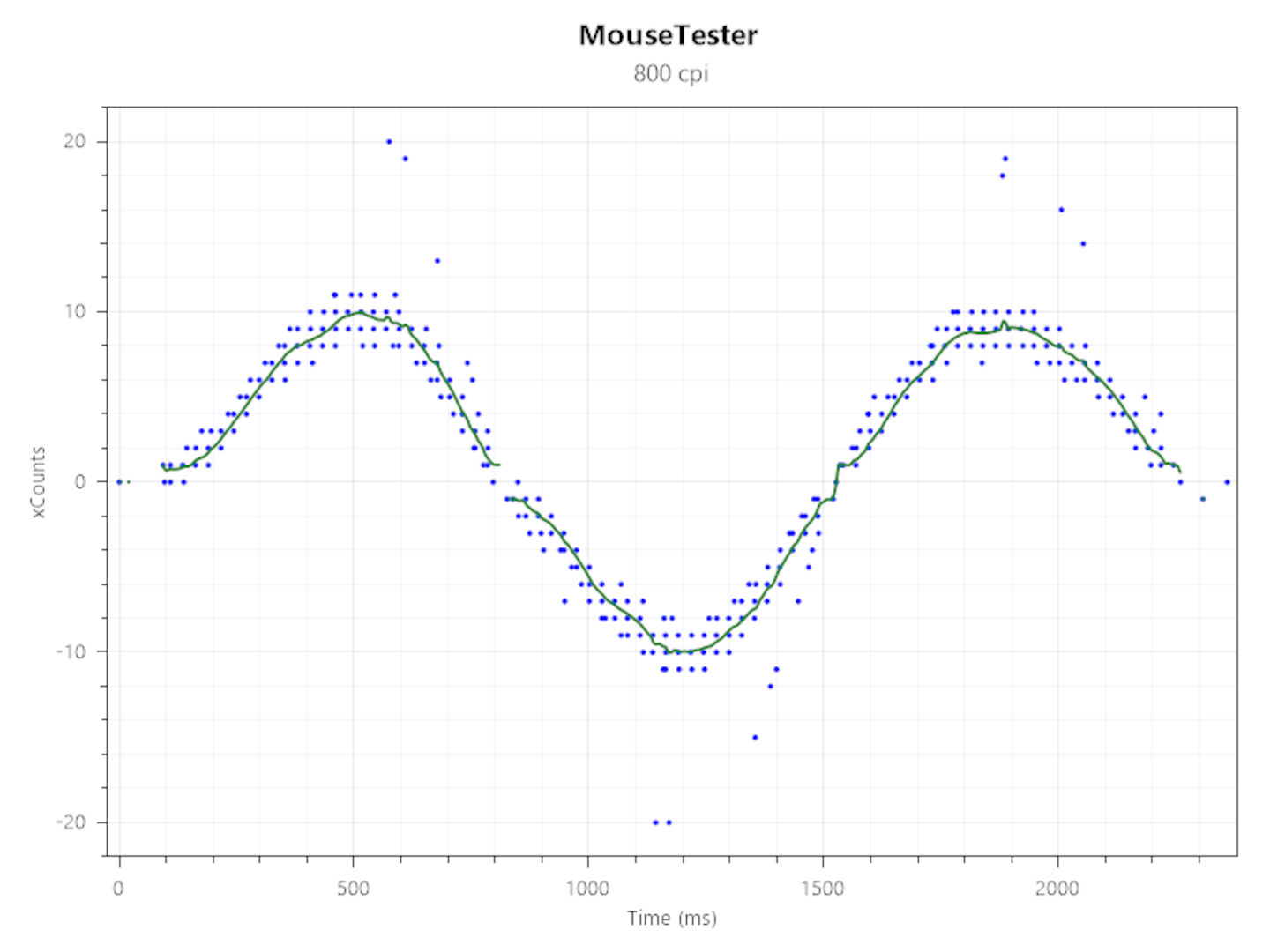
4,000 Hz — The closer the dots are together, the more consistent a mouse is reporting movement. More variation or stray dots makes for a less accurate sensor.
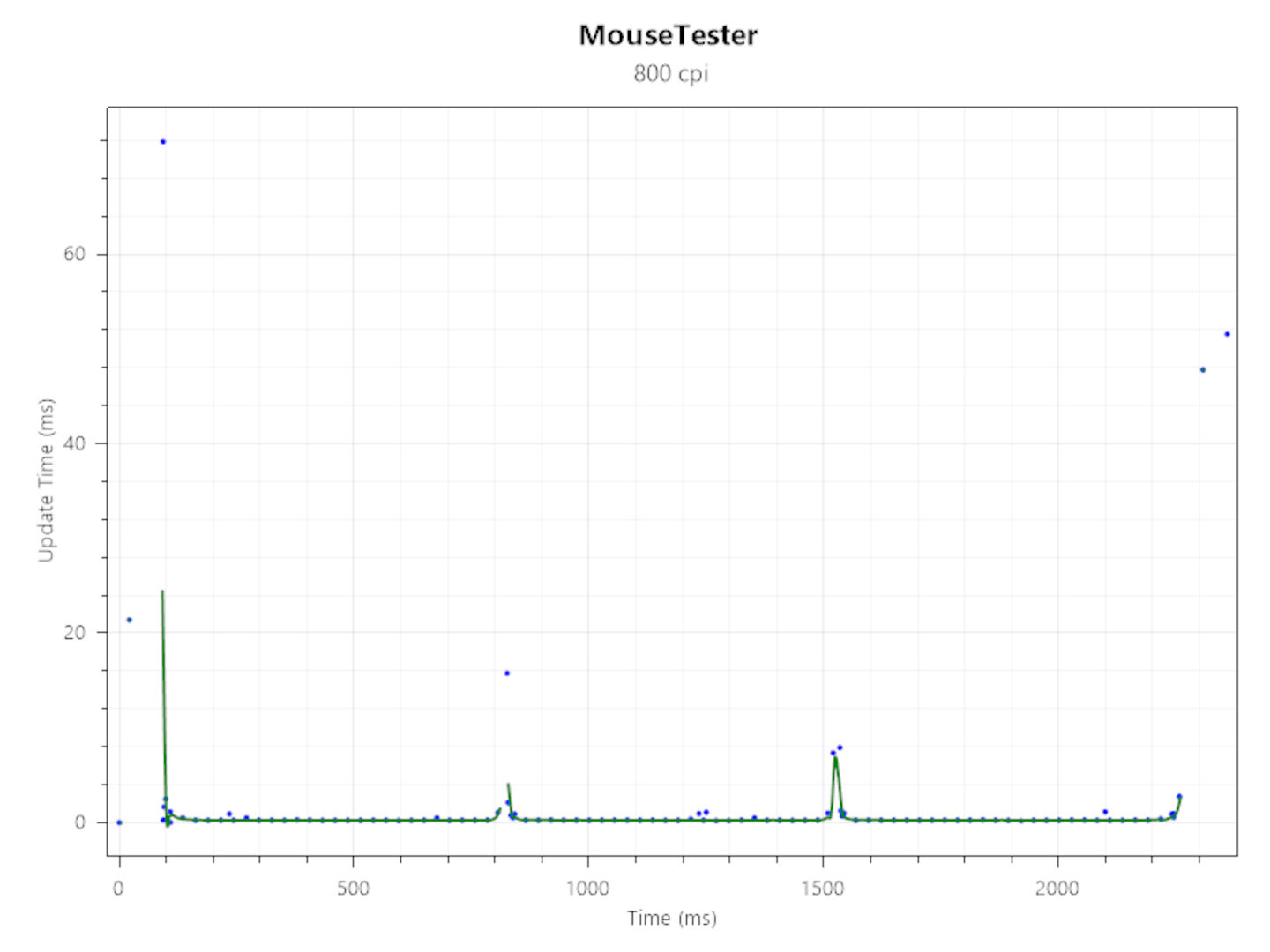
4,000 Hz — Each dot represents an update, which corresponds to the polling rate. Every 1 ms should mark a single update on a 1,000 Hz mouse.
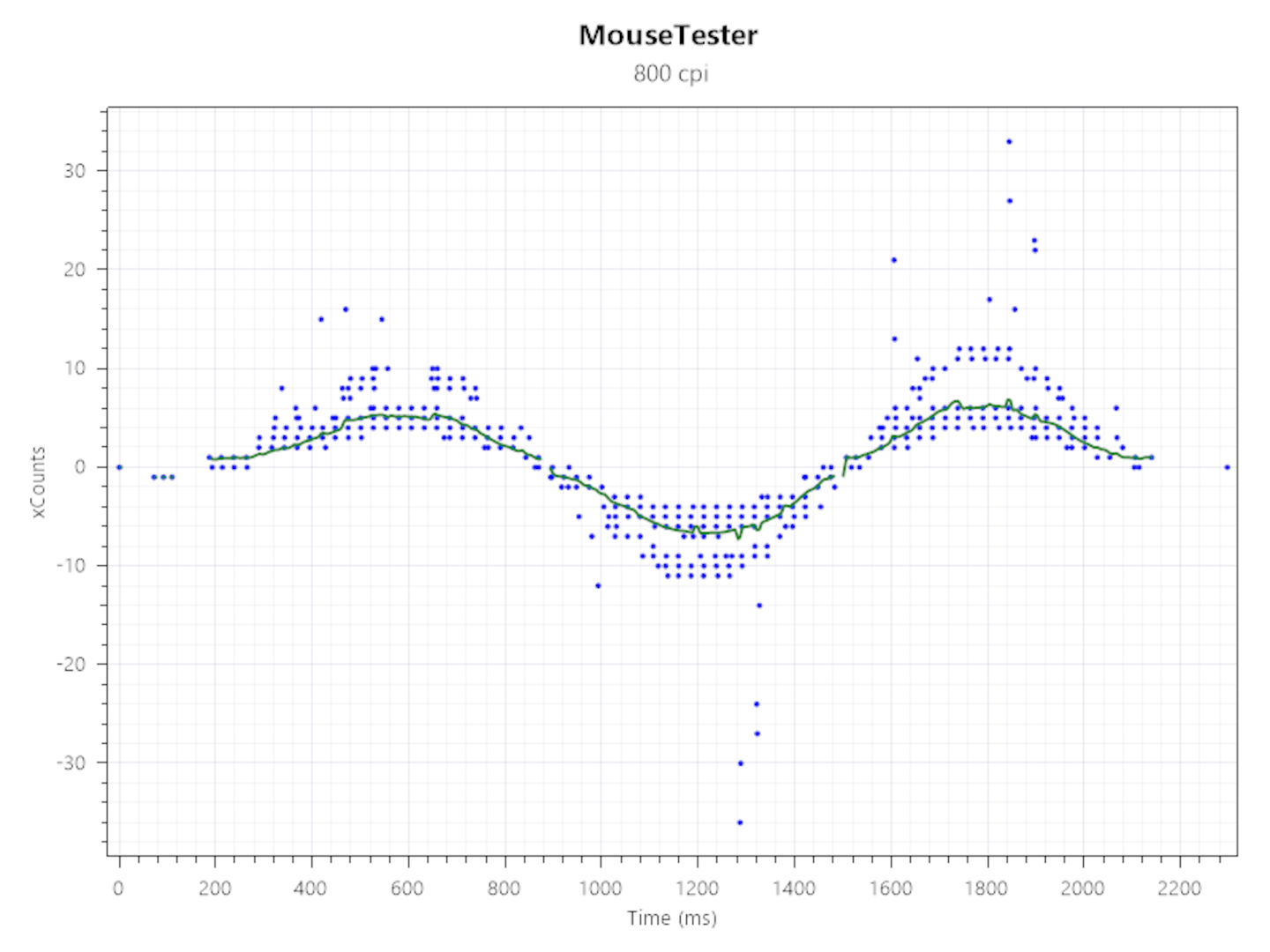
8,000 Hz — The closer the dots are together, the more consistent a mouse is reporting movement. More variation or stray dots makes for a less accurate sensor.
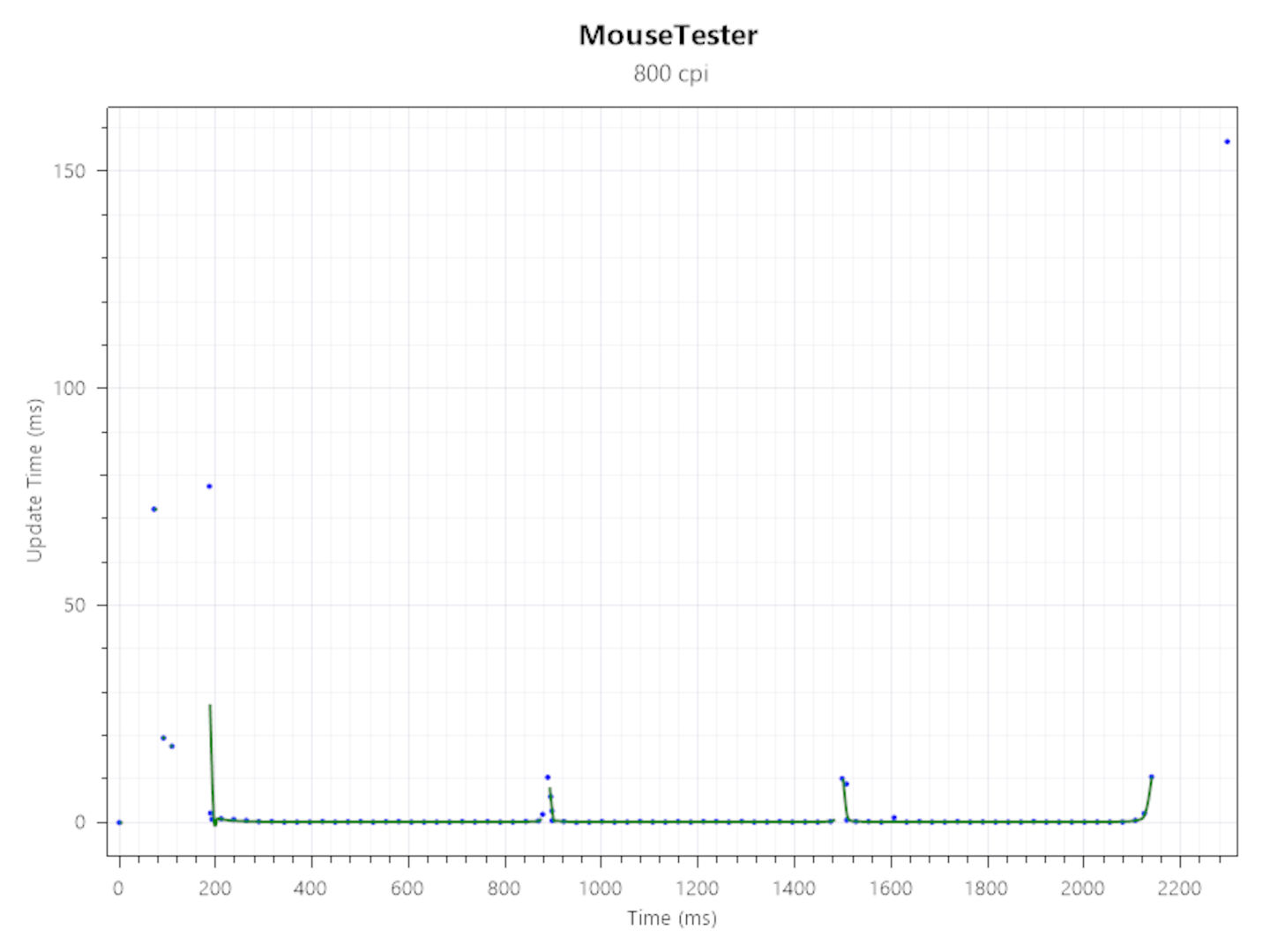
8,000 Hz — Each dot represents an update, which corresponds to the polling rate. Every 1 ms should mark a single update on a 1,000 Hz mouse.
Ignore the various spikes in the above charts (that's my wonky mouse movement) and focus on how much and how often the points are vertically separated from the overall curve. As you can see, the Viper V3 Pro tracks very well and the interval charts (the ones with the flat lines) prove that Razer's optical sensor and wireless system have no issue in keeping pace with everything.
Polling rates above 1 kHz do add a bit more load to the CPU so if you need the very highest frame rates in your games, then you'll have to find the right balance between polling rate and game performance. Just slapping it to 8 kHz frame rate and hoping for the best isn't sensible.
✅ You must have hyper-sensitivity and ultra-high polling rates: Whether it's for bragging rights or actual gaming benefit, there's nothing to touch the Viper V3 Pro in terms of sheer speed.
✅ You want a mouse that feels like air: At just 54 g, this mouse is perfect for those who hate rodents with mass. It's hard to imagine how much lighter Razer could make it.
❌ You're not a serious esports competitor: What makes it great for ultra-fast gaming, where real money is on the line, also makes the Viper V3 Pro uncomfortable and awkward in general use.
❌ You hate constantly charging a device: The Viper V3 Pro's battery life is pretty good with a standard polling rate but drops to disappointing levels when maxed out.
It's also worth noting that if you use the supplied high-quality, braided USB Type-C so that the Viper V3 Pro is in wired mode, then the maximum polling rate on offer is the standard 1 kHz. Of course, using a cable hugely interferes with how light and easy the mouse is to move about, and the wireless connection is exceptionally good, so you're only going to be doing this to charge it.
After spending a week of gaming and working with Razer's Viper V3 Pro, I came to realise that I was faced with a conundrum, with regards to how best to review it. On the one hand, it felt like I had been given one of the latest Formula 1 cars to test drive around a circuit and then compare it to other F1 machines.
While I've done circuit racing a bit, many years ago, I'm simply not capable of pushing such cars to anywhere near their limits to discern any differences between them.
It's the same with the Viper V3 Pro. I'm not a professional esports competitor; heck, I'm not even remotely good at Counter-Strike 2, DOTA 2, or Valorant. So how could I possibly know what's good or bad, when it comes to gaming mice that are specifically targeted at such people? I simply don't have that level of skill, precision, and requirements of accuracy.
On the other hand, neither do the vast majority of PC Gamers to whom Razer is marketing this mouse. Sure, millions of folks are way better than me at competitor shooters and the like, but that doesn't mean they'll be able to tell the difference between a 4 kHz and 8 kHz polling rate.
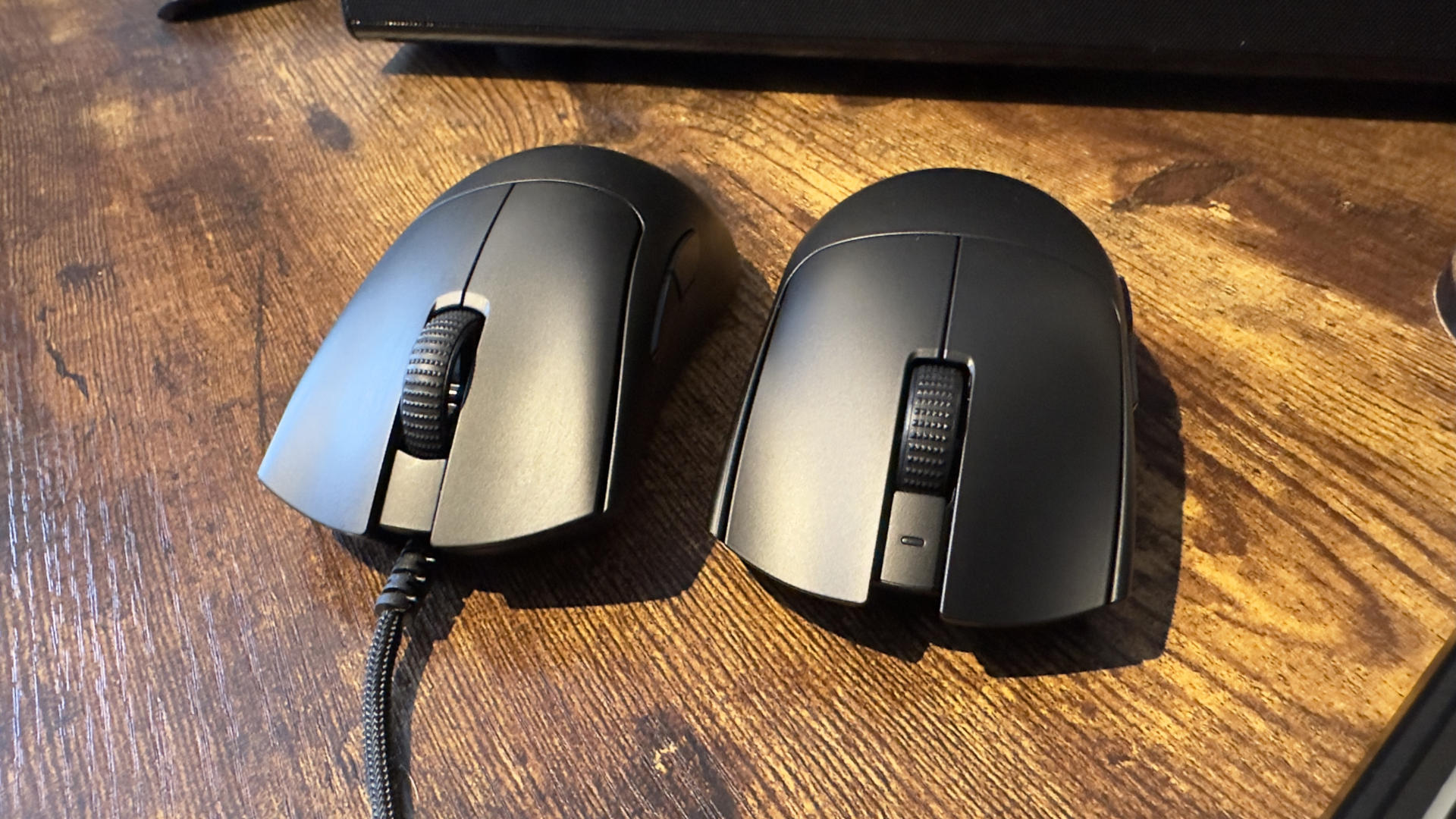
They're going to form the majority of people who may want to buy and use this mouse, though, and on that basis, I can form a conclusion as to whether the Razer Viper V3 Pro is good or not.
I found it to be too small and too light for my tastes; I didn't like how the shell felt in my hand, either. I also felt the DPI cycling system was a bit too fiddly. Oh, and it's very expensive for a mouse that's exceptionally narrow in focus. It's very much a Ferrari in a field of Fords, albeit a rather bland-looking one.
However, I do have another Razer mouse that gets used a lot in my office, the wired DeathAdder V3. Compared to that, the Viper V3 Pro was quite a lot nicer to game with—in part, that's down to its wireless nature (I'm of the opinion that wired mice are the spawn of the Devil) but also because it was more accurate and tracked better on different surfaces.
It's very well built, with positive actions to every button and the wheel. The huge PTFE feet mean it glides effortlessly across most materials. Razer's packaging is top-notch, with a surprisingly decent USB cable. But then again, it should be at this price.
As to whether one should buy the Viper V3 Pro, that's ultimately a matter of need (expense aside). Do you need one of the lightest mice around? Do you need 8 kHz polling? Do you need up to 35,000 DPI? Or put more simply, do you need the ultimate esports mouse? If the answer is yes to any of those, then Razer's latest Viper should be seriously considered.
But if the answer is no, then there are more suitable choices on offer and you should check out what we think are the best gaming mice out there.
It's a Formula 1 car of mice, and that means blistering speed and performance. It also means it's very expensive, uncomfortable if you're the wrong size, and a pain to use for normal tasks.

Nick, gaming, and computers all first met in 1981, with the love affair starting on a Sinclair ZX81 in kit form and a book on ZX Basic. He ended up becoming a physics and IT teacher, but by the late 1990s decided it was time to cut his teeth writing for a long defunct UK tech site. He went on to do the same at Madonion, helping to write the help files for 3DMark and PCMark. After a short stint working at Beyond3D.com, Nick joined Futuremark (MadOnion rebranded) full-time, as editor-in-chief for its gaming and hardware section, YouGamers. After the site shutdown, he became an engineering and computing lecturer for many years, but missed the writing bug. Cue four years at TechSpot.com and over 100 long articles on anything and everything. He freely admits to being far too obsessed with GPUs and open world grindy RPGs, but who isn't these days?

